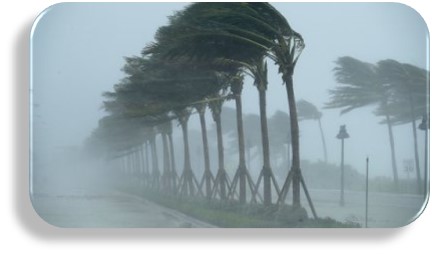
Hurricane preparedness is one of those things that is easily put off and forgotten about until a hurricane is knocking on your door and threatening to tear it right off the hinges. As Floridians, we are well aware that hurricane season runs from June through November, and according to National Weather Center statistics, these storms leave billions of dollars in damages in their wake.
All of which means that there’s no better time than right now for people living in storm-prone regions to know the basics of hurricane preparedness. Whether you plan to stay and face the storm or evacuate, here are some areas to check on your home and how to protect them. All of which can make a huge difference in the amount of damage you’ll face
Roof
Living in South Florida or other hurricane-prone areas often calls for hurricane straps or clips, which are added to a roofing structure to hold the roof in place even in hurricane-force winds. If you are unsure that your home is equipped with these straps or clips, you can easily find out through a quick inspection. If your house is older or wasn’t built with straps, homes can be retrofitted with these reinforcements. It is important that you find a qualified contractor who knows how to install them (we would be glad to provide you with our list of preferred contractors). Contact Us for recommendations.
Windows
If you think all will be fine if you have some duct tape handy to create a giant X across each window, you should think again. This popular hurricane preparedness hack doesn’t really hold up in high winds.
Instead, we recommend that those who live in hurricane-prone areas replace existing windows with high-impact glass. If there’s a storm headed your way, and you can’t get them done in time, boarding windows with plywood is less costly and can still mitigate most major damage.
Homeowners should also contact their insurance company to make certain that their current coverage offers sufficient protection in the event a storm hits. In particular, focus on whether your policy covers flood or water damage and whether it will fully cover rebuilding costs if necessary. Homeowners should also prepare a list of their belongings to present to the insurance company in the event that their home is seriously damaged.
Doors
Doors with loose screws and/or missing bolts will most likely, not withstand hurricane-force winds. So make sure your doors are properly installed and secured. We recommend having at least a 1-inch deadbolt installed to make doors more sturdy. If your doors are made of glass, protect the window section of the doors in the same way you would your other windows (storm shutters or plywood).
Yard
No matter what the expected wind speeds are, the National Weather Service warns that trees and limbs can become airborne during a hurricane. The stronger the winds, the greater the potential for trees to fall on your home or for branches to crash through a window or your roof. To reduce the risk, we recommend trimming back trees that overhang any kind of structure (homes, sheds, etc.). You may also want to consider removing any that are leaning or appear to be weak on not well secured as part of your hurricane preparation efforts.
Interior Items
Where there is a hurricane, there is definitely going to be water, and where there is water, there’s often flooding. Although the apparent step is to move everything you can off of the floor or move it to the second story of your home if you have one. We also suggest going the extra mile by putting all important personal documents and other items you can’t afford to lose in a waterproof and fireproof safe. Hard drives and other electronics should be placed inside a media cooler, which will keep them from overheating when electricity is lost for extended periods of time. As added protection, you can place your media cooler inside the fireproof, waterproof safe.
